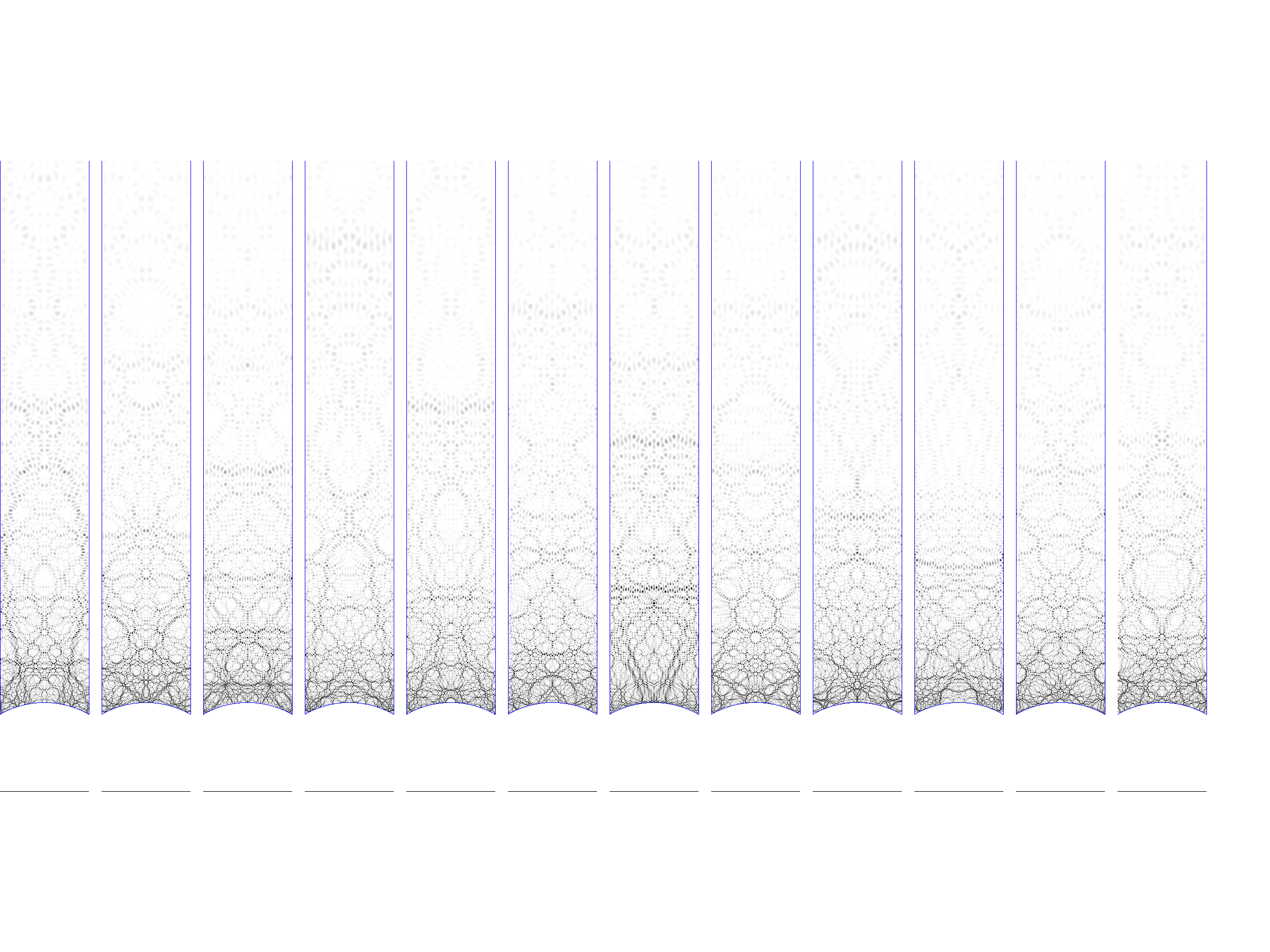
The image used at the top of each page in this website is a density plot of an eigenfunction of the Laplacian on the upper half-plane with the hyperbolic (constant negative-curvature) metric, obeying certain symmetries which make it a so-called arithmetic surface. Black shows large values of the square of the mode value, white zero. Its fundamental domain is the strip shown, bounded by an arc at one end and unbounded on the other. For aesthetic reasons the y-axis has been chosen horizontal; in Cartesian coordinates the area element is dxdy/y2. These eigenfunctions are known as Maass forms. They have importance in number theory, as well as providing a rare example where QUE has been (recently) proven.
An introduction can be found in the Baltimore review article of Peter Sarnak, here.
Below is a set of 12 consecutive such eigenfunctions, with mode number n=5601, 5602,..., 5612, shown in the more usual orientation (y is vertical, and the x-axis is visible as the line segment at the bottom), and with the density now with the correct metric (intensity proportional to square of mode value times 1/y2). The modes were evaluated by Alex Barnett using code, and Fourier coefficients, provided by Holger Then. Click on image to enlarge: